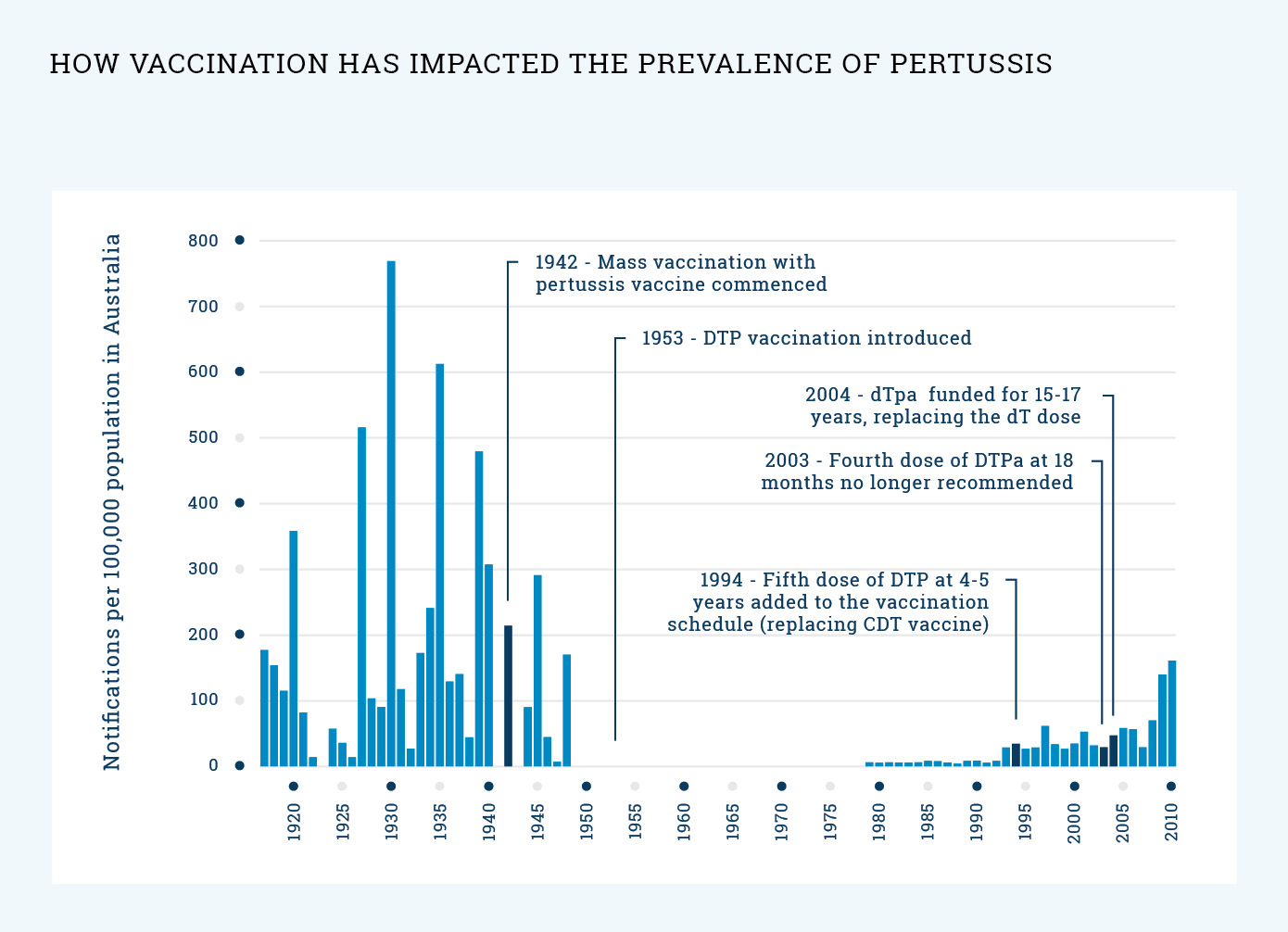Whooping cough (pertussis)
Key facts
-
Whooping cough (pertussis) is a bacterial infection that irritates the airways, making them sore or painful and causing sudden, long coughing fits. These fits can be very severe.
-
In Australia, all infants and young children are recommended to be vaccinated against whooping cough. To keep this level of protection for adolescents, a booster dose is recommended for all 12- and 13-year-olds.
On this page
- What is whooping cough (pertussis)?
- What will happen to my adolescent if they catch whooping cough?
- Which vaccine will protect my adolescent against whooping cough?
- When should my adolescent be vaccinated?
- How does the whooping cough vaccine work?
- How effective is the whooping cough vaccine?
- Will my adolescent catch whooping cough from the vaccine?
- What are the common reactions to the vaccine?
- Are there any rare and/or serious side effects to the vaccine?
- What impact has vaccination had on the spread of whooping cough?
- What if I still have questions?
